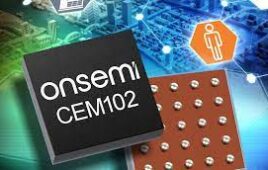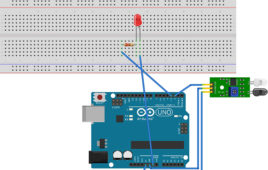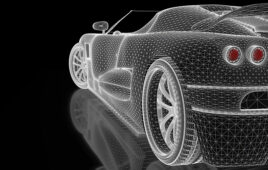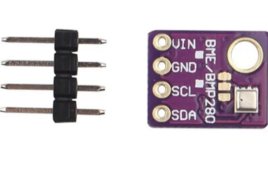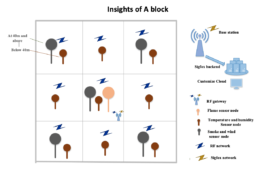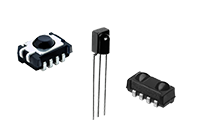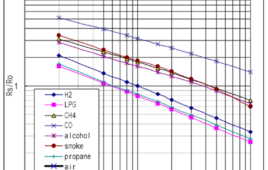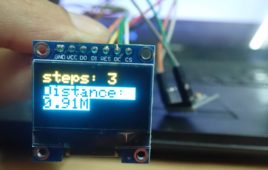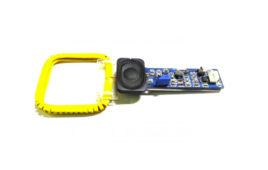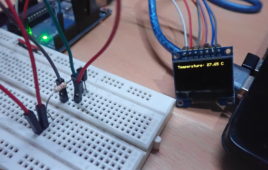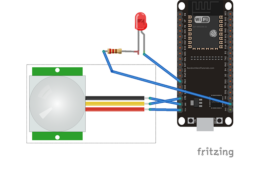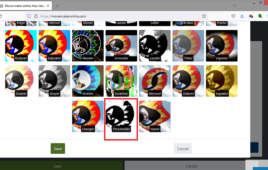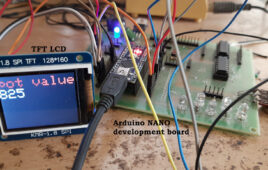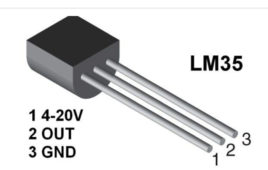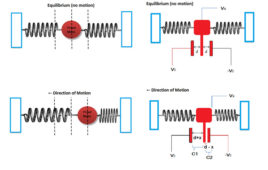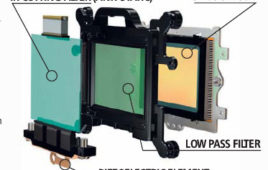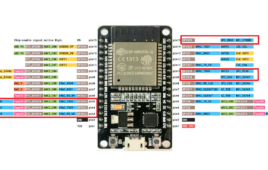onsemi announced the availability of the CEM102, a compact analog front-end (AFE) that enables electrochemical sensing with exceptional accuracy at very low currents. With its small form factor and industry-leading low power consumption, the CEM102 allows engineers to create versatile and compact solutions for industrial, environmental, and healthcare applications such as air and gas detection,…
Arduino-based optical proximity sensor using IR LEDs
Proximity sensors are used to detect something approaching near. These sensors are useful in many applications like collision avoidance, obstacle detection, path following, touchless sensing, motion detection, and object detection. There are different types of proximity sensors like optical, ultrasonic, capacitive, inductive, and magnetic. The capacitive, inductive, and magnetic proximity sensors are used in specific…
What role do automotive sensors play in modern vehicles?
A network of sensors is embedded throughout vehicles, serving as a critical type of “nervous system” that detects and measures different automotive parameters. This network is essential for a vehicle’s safety, performance, and efficiency. Several types of sensors are responsible for different roles, such as monitoring the temperature of engine components, the speed of the…
What temperature sensors are used for electronics and IoT devices?
Temperature sensors are commonly used in embedded applications to monitor ambient temperature and prevent overheating. As a thermal management of the device, these sensors can issue a warning or trigger a cooling mechanism. However, the use of these sensors varies, depending on the application. For example, temperature sensors are used in: Industrial equipment for process…
Forest fire detection system using IoT sensor network
In this article, we will be detecting a forest fire using an IoT sensor network and making a portable device with battery operation. Getting information about a fire hazard in a forest in time can prevent the forest fire from spreading. The sensor network can give the particular location of the fire as we already…
Vishay launches miniaturized IR sensor modules for remote-control systems
Vishay Intertechnology has introduced three new miniaturized infrared (IR) sensor modules for remote-control systems. Featuring modulated carrier output for code learning applications, the Vishay Semiconductors dual-lens TSMP95000 and single-lens TSMP96000 and TSMP98000 combine a wide supply voltage range from 2.0 to 5.5 V with a low typical power consumption of 0.35 mA at 3.3 V. Featuring a new in-house…
Arduino-based portable pollution monitor with OLED display
A majority of middle-aged people suffer from health issues like asthma and breathing problems, particularly in cities. Air pollution is the major cause of it. In this project, we have designed a portable device that detects different air pollution metrics and displays them on a small OLED screen. People with respiratory issues can use the…
Arduino-based walking steps and distance calculator
A very common feature in Android and iOS fitness apps is calculating the number of steps the user walks and the distance he covers. These apps calculate the number of steps walked by the user either using GPS location and manipulating the geospatial data or by monitoring the acceleration vector of the device using an…
How to design an Arduino-based RLC metal detector using an RC-A-354 sensor
Metal detectors offer several useful applications. A few examples include: Security checks Positioning detection for production equipment Elevator floor control Mineral prospecting Unearthing relics and artifacts Collecting traffic statistics Metallic waste detection Game entertainment Each detection circuit employs different electronic components and designs. A simple metal detector can be constructed using an RLC circuit. In…
Arduino-based altitude meter using BMP180 sensor
BMP180 is a digital pressure sensor designed for low-power, low-voltage operation in mobile phones, navigation devices, and personal digital assistants. The sensor has an I2C interface to communicate sensor data. It can operate on 2.5~3.6V and consumes only 12 uA even in the ultra-high-resolution mode. The sensor can be used for several applications, including measuring…
How to design Arduino-based water temperature monitor using DS18B20 1-wire temperature sensor
Environment sensors are of great importance in embedded applications. Many temperature sensors measure the ambient temperature or temperature of a surface. For measuring water temperature and other fluids, waterproof temperature sensors are required. One of such temperature sensors is DS18B20. This sensor can measure the temperature of the air, liquids like water, and ground. The…
How to build a WhatsApp-notifying home security system
A security alarm detects unauthorized entry into a home or building. In the past, these security devices simply triggered a loud siren when an intrusion was detected. As technology advanced, the systems were equipped with GSM modems to send an SMS alert to the home or building owner whenever an intrusion was detected. One drawback…
What are the sensors used in self-driving cars?
Automotive engineers have already developed semi-autonomous vehicles. Fully self-driving vehicles are not far from reality. According to recent research, autonomous driving (AD) could create $300 billion to $400 billion in revenue by 2035. The self-driving car not only showcases how advanced technology is, but it’s also a subject of controversy. There are valid concerns about…
How to play a video on an SSD1306 OLED
Small organic light-emitting diode (OLED) displays are commonly used in embedded devices. This is because OLEDs generally cost the same as character LCDs but feature a better user interface (UI) and user experience (UX). Typically, embedded OLED screens are used to display textual messages, but what about videos? For example, is it possible to playback…
Sensor value display on TFT LCD using Arduino: Part I
Displaying potentiometer value and temperature using LM35 In my previous tutorial series on displaying sensor data (value) on OLED display, I have explained how to display values of different sensors like a potentiometer, LM35, soil moisture sensor, DHT, HC SR04, etc. on a tiny 1” OLED display. This time, I will demonstrate and explain how…
Room-temperature monitor using Arduino and the LM35 sensor
Several consumer devices now involve temperature monitoring. For example, most of the air conditioners on the market feature climate control, where the AC continuously monitors the ambient temperature of a room and accordingly regulates the air conditioning. Even some digital clocks now have temperature monitors embedded in them. Many other consumer appliances also offer temperature…
What are different types of biometric sensors?
The term “Biometrics” is derived from “bio’” which means life, and “metrics”, which means measurement. Biometrics is developing for use in various technologies, including the unique identification and recognition of people. The technology at its current juncture is widely used in security and surveillance systems. Biometrics also has the possibility of converging with other technologies…
What are inertial sensors?
Inertial sensors are used to transduce inertial force into measurable electrical signals to measure acceleration, inclination, and vibration of an object. Micromachining technology has made it possible to produce MEMS (Micro Electromechanical System) inertial sensors using single-crystal silicon sensor elements. These micron-sized sensors meet all major system design drivers like low-cost, high performance, high precision,…
CMOS Image Sensors
Advent of CMOS technology in eighties led to the phenomenal growth in semiconductor industry. Transistors have become smaller, faster, consume less power, and are cheaper to manufacture. It is CMOS technology which has enabled very high integration on the chips leading to modern high performance, miniaturized integrated circuits. Apart from the valuable contribution in miniaturization of integrated circuits, CMOS technology found applications in sensing applications. CMOS technology has been adopted to design sensors, especially in the field of imaging. Due to the wide usage of CMOS based image sensors, CMOS sensors are often considered to be a synonym of CMOS based image sensors and have emerged as a competitor to CCD based image sensors.
MicroPython – SPI Protocol in ESP8266 and ESP32
SPI and I2C are the common serial communication protocols used by sensors for communicating with microcontrollers and microcomputers. Both protocols are master-slave protocols. The sensors often take the part of a slave device within an embedded ecosystem. Most of the time, a sensor only requires sending data to the microcontroller/microcomputer. This remains true even if…

